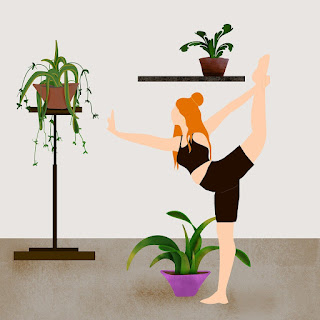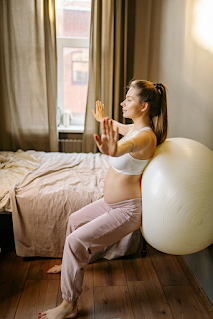The Science Behind Yoga and Meditation for Better Sleep
The Science Behind Yoga and Meditation for Better Sleep
In today’s fast-paced world, sleep often takes a back seat to daily stress, work, and distractions. Yet, restful sleep is essential for both our physical and mental well-being. More than just a time to rest, sleep allows our bodies to repair and rejuvenate, preparing us for the next day. But how can we improve sleep when stress keeps us awake? Yoga and meditation are two ancient practices that offer more than relaxation—they offer physiological benefits that can transform our sleep patterns. In this article, we will explore the science behind how these practices lower cortisol levels, balance the nervous system, and promote deeper, more restorative sleep.
The Importance of Sleep
Before delving into how yoga and meditation can help, it’s essential to understand the importance of sleep. Sleep plays a critical role in maintaining brain function, mood regulation, memory consolidation, and muscle repair. Without adequate sleep, stress builds, leading to issues like irritability, cognitive impairment, and even weakened immune function. Chronic sleep deprivation has been linked to severe health conditions, including heart disease, diabetes, and obesity. In contrast, a good night’s sleep leaves you feeling refreshed, promotes emotional stability, and helps you cope better with life’s demands.
The Role of Cortisol and Stress in Sleep Disruption
One of the key factors disrupting our sleep in modern times is the stress hormone cortisol. Cortisol is released by the adrenal glands in response to stress, whether it’s an immediate threat or ongoing pressure from daily life. While it’s beneficial in small doses (such as when you need to react quickly in dangerous situations), chronic stress keeps cortisol levels elevated, making it difficult to relax, unwind, and fall asleep.
Studies have shown that high levels of cortisol are associated with insomnia and fragmented sleep cycles. This is where yoga and meditation come into play. Through mindful movement, deep breathing, and relaxation techniques, these practices have been scientifically proven to reduce cortisol levels, helping the body shift from a state of heightened stress to one of calm. A regular yoga or meditation practice can be a powerful tool for reducing this stress and, consequently, promoting better sleep.
Activating the Parasympathetic Nervous System (Rest and Digest)
Yoga and meditation are especially effective in stimulating the parasympathetic nervous system, also known as the “rest and digest” system. This system counteracts the “fight or flight” response triggered by stress and anxiety, helping your body return to a balanced state of calm. When the parasympathetic system is activated, heart rate slows, blood pressure drops, and the body naturally prepares for rest.
Research has demonstrated that meditation and certain yoga postures (particularly those focusing on relaxation and breathing) increase heart rate variability (HRV), a measure of how well your body can adapt to stress. A higher HRV is linked to greater parasympathetic activity, indicating better control over stress responses and, in turn, improved sleep quality. By incorporating yoga and meditation into your routine, you help regulate this system, making it easier to transition into deep, restorative sleep.
Melatonin Production and Yoga/Meditation
Melatonin is the hormone responsible for regulating our sleep-wake cycle. It signals to the brain that it’s time to wind down and sleep. However, factors like artificial light, irregular sleep schedules, and stress can interfere with melatonin production, leading to poor sleep quality.
Studies have shown that practices like yoga and meditation can help naturally increase melatonin levels. The calming effects of both practices reduce the body’s overall arousal state, signaling the brain to release more melatonin, helping the body prepare for sleep. A study published in the Journal of Alternative and Complementary Medicine found that participants practicing yoga regularly showed higher levels of melatonin, resulting in improved sleep onset and duration. This suggests that combining gentle yoga and meditation with your evening routine can naturally help signal to your body that it’s time for sleep.
Balancing the Nervous System for Deeper Sleep
Yoga postures (asanas) and pranayama (breathing exercises) are powerful tools to help regulate the nervous system and balance both the sympathetic and parasympathetic branches. While the sympathetic nervous system energizes us and prepares us for action, the parasympathetic system ensures we can rest, digest, and heal.
Certain yoga poses, such as Viparita Karani (legs up the wall) and Supta Baddha Konasana (reclined bound angle pose), are particularly effective at calming the nervous system. These poses, combined with deep, slow breathing, signal to the brain that it’s safe to relax. Shavasana (corpse pose) is another restorative posture that enhances relaxation, allowing the body to fully let go and enter a state of deep rest. The combination of mindful breathing and gentle poses creates a state of calm, helping the body and mind transition into sleep mode.
In addition, controlled breathing exercises—like 4-7-8 breathing or alternate nostril breathing—help lower heart rate and activate the parasympathetic nervous system. These practices create a state of relaxation, preparing the body for sleep by reducing physical tension and quieting the mind.
Scientific Studies Supporting Yoga and Meditation for Better Sleep
The benefits of yoga and meditation for sleep have been supported by numerous scientific studies. Research published in the Journal of Clinical Psychology found that participants who engaged in mindfulness-based meditation experienced significant reductions in insomnia and overall sleep difficulties. These improvements were attributed to the calming effect of mindfulness practices on the nervous system and the reduction in mental chatter.
Another study in the Journal of Ayurveda and Integrative Medicine explored the impact of yoga on sleep quality in individuals suffering from chronic insomnia. The results showed that participants who practiced yoga experienced significant improvements in sleep efficiency, sleep duration, and overall sleep quality. Yoga was found to lower arousal levels, making it easier to transition into restful sleep.
How to Incorporate Yoga and Meditation into a Bedtime Routine
Incorporating yoga and meditation into your bedtime routine doesn’t need to be complicated. Here’s a simple evening practice you can try:
- Gentle Stretching: Start with a few gentle stretches like seated forward fold (Paschimottanasana) or child’s pose (Balasana) to release tension.
- Relaxing Breathing Exercise: Practice deep, diaphragmatic breathing for 5-10 minutes, focusing on long exhalations.
- Meditation: Spend a few minutes in seated meditation, focusing on your breath or a calming mantra.
- Restorative Poses: Finish with 5-10 minutes of restorative poses like legs up the wall or Shavasana.
Consistency is key. By creating a regular yoga and meditation routine before bed, you can signal to your body and mind that it’s time to unwind and prepare for sleep.
Conclusion
Yoga and meditation offer more than just relaxation—they provide scientifically backed benefits for improving sleep quality. By lowering cortisol levels, activating the parasympathetic nervous system, and boosting melatonin production, these practices create the perfect environment for deep, restorative sleep. Whether you struggle with occasional sleeplessness or chronic insomnia, integrating yoga and meditation into your nightly routine can transform your sleep and overall well-being. Start small, be consistent, and enjoy the journey towards a restful night’s sleep.









